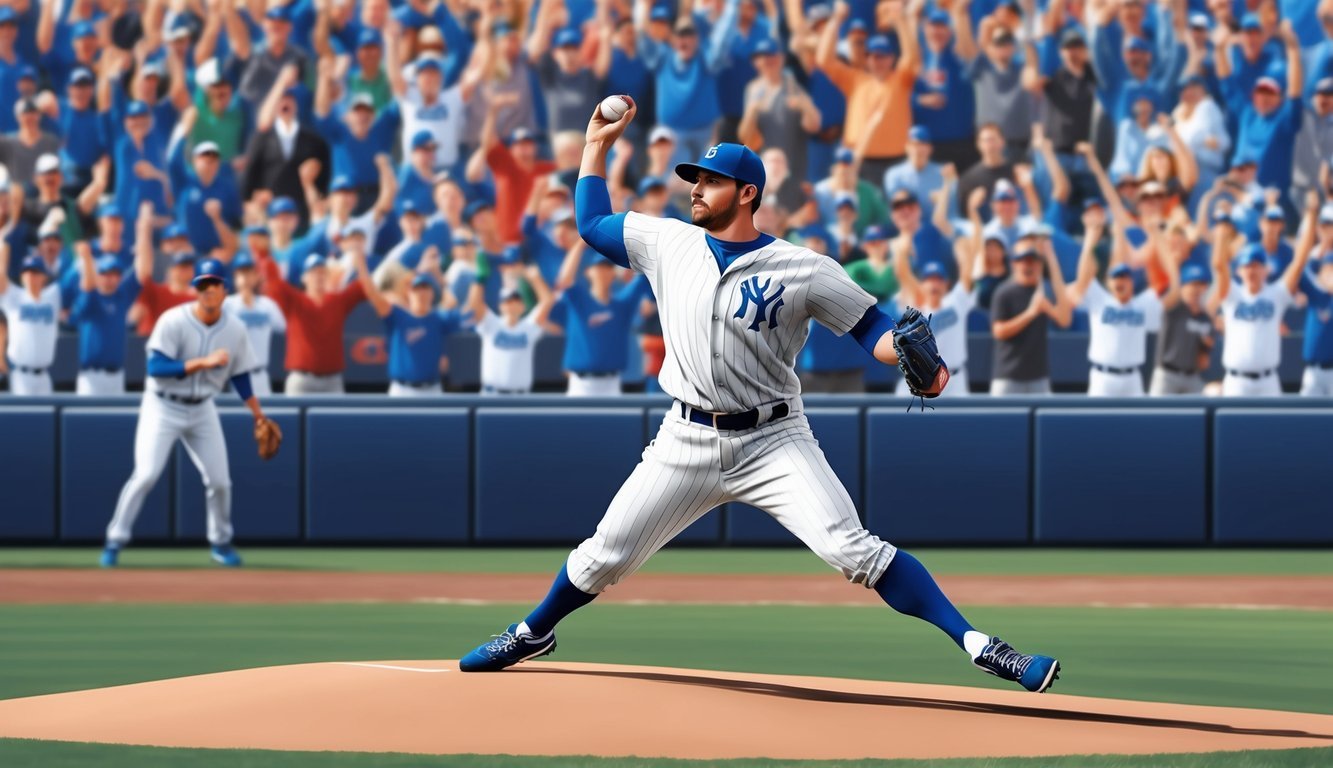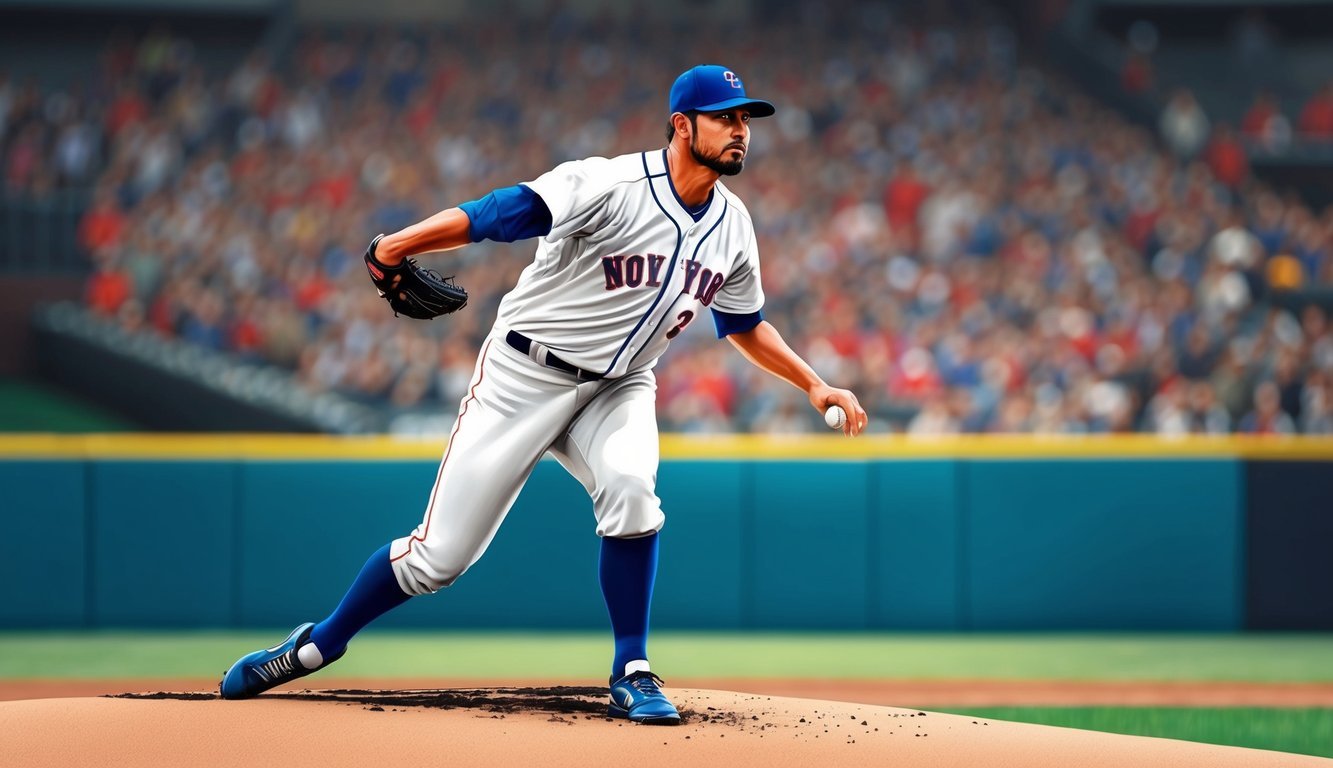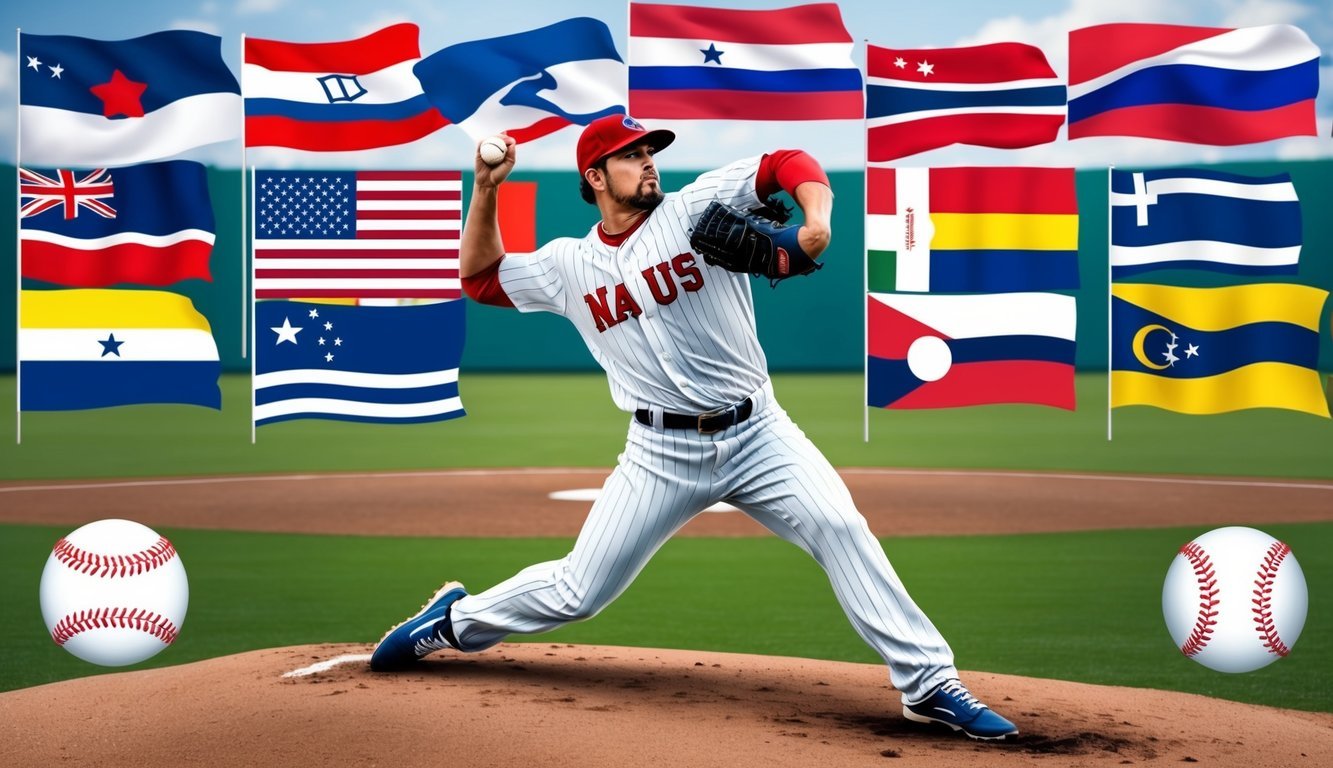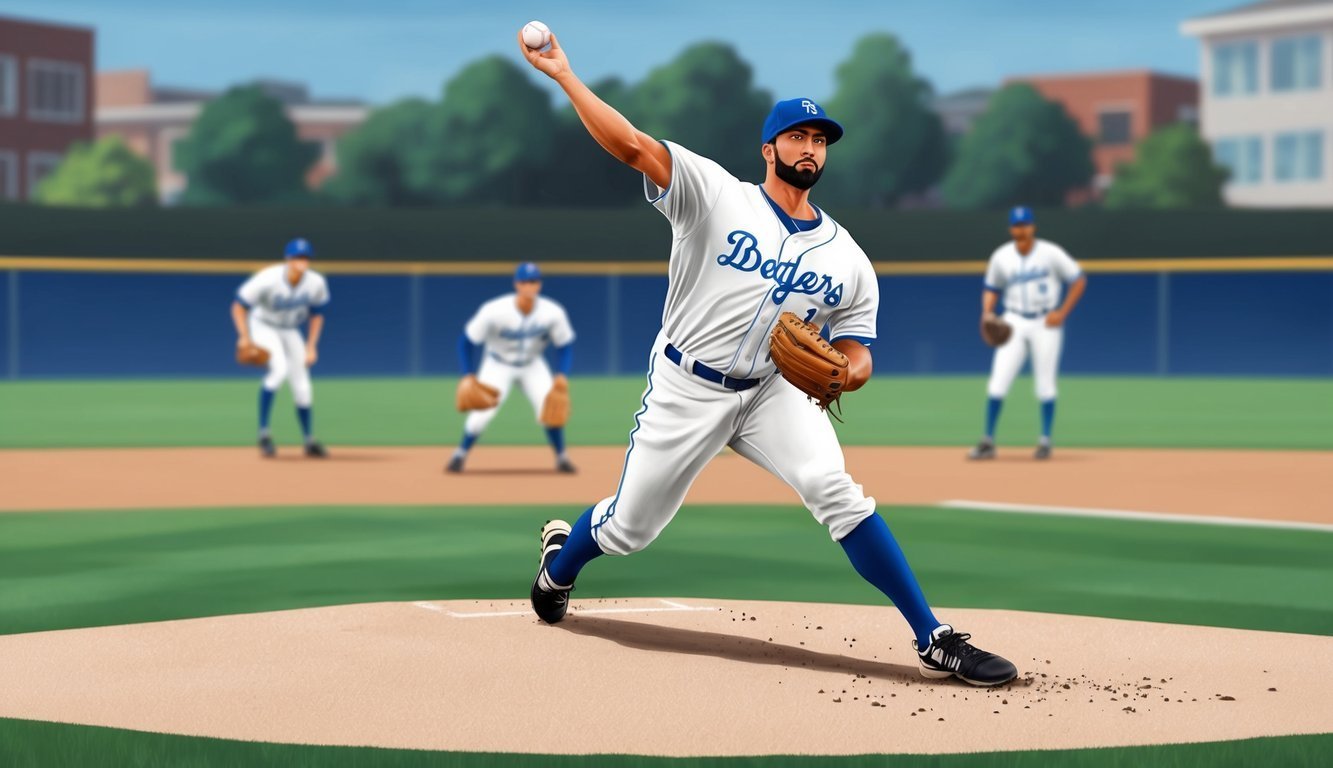Baseball pitchers are the heartbeat of America’s favorite pastime.
They command the game with precision and skill, standing tall on the mound.
These athletes possess a unique blend of physical strength, mental fortitude, and tactical acumen that sets them apart on the diamond.
A great pitcher can single-handedly change the course of a game, season, or even baseball history. From legendary figures like Babe Ruth to modern-day superstars like Shohei Ohtani, pitchers have captivated fans with their ability to dominate opponents.
Ohtani has taken the baseball world by storm, becoming the first player since Ruth to excel as both a pitcher and hitter at the highest level.
The art of pitching goes beyond simply throwing a ball.
It involves mastering various pitches, understanding hitter tendencies, and maintaining composure under pressure.
Top pitchers like Logan Gilbert use their physical attributes and advanced metrics to gain an edge.
They constantly refine their craft to stay ahead in the ever-evolving sport of baseball.
The Role of a Pitcher in Baseball
Pitchers are the cornerstone of a baseball team’s defense, controlling the game’s pace and strategy from the mound.
They employ various pitches and techniques to outsmart batters and secure crucial outs.
Starting Pitcher vs. Relief Pitcher
Starting pitchers form the backbone of a team’s rotation.
They typically pitch 5-7 innings per game, aiming to keep runs to a minimum.
These workhorses must possess stamina and a diverse pitch repertoire to face batters multiple times.
Relief pitchers, on the other hand, enter the game later to preserve leads or keep scores close.
They often specialize in specific situations:
- Closers: Pitch the 9th inning to secure wins
- Setup men: Handle the 7th or 8th innings
- Middle relievers: Bridge the gap between starters and late-inning specialists
Relief pitchers may have a narrower pitch selection but can throw with maximum effort for shorter durations.
The Significance of the Ace Pitcher
The ace is a team’s top starting pitcher, often facing opponents’ best hurlers.
Aces are expected to:
- Pitch deep into games, preserving the bullpen
- Deliver consistent quality starts
- Stop losing streaks and set the tone for a series
These elite pitchers usually boast exceptional command, velocity, and mental toughness.
Teams rely on their aces to lead by example and mentor younger pitchers.
An ace’s impact extends beyond individual games.
Their presence can boost team morale and intimidate opposing lineups, making them invaluable assets in pennant races and playoffs.
Pitching Mechanics and Skills
Mastering pitching mechanics and developing a diverse skill set are crucial for success on the mound.
Pitchers must hone their control, movement, and repertoire to keep batters off balance and secure outs.
Developing Control and Movement
Control is the foundation of effective pitching.
Pitchers must consistently hit their spots to succeed.
This requires precise mechanics and countless repetitions.
A balanced stance, smooth delivery, and proper follow-through all contribute to improved control.
Movement on pitches is equally important.
Pitchers use various grips and release points to create movement.
A four-seam fastball typically has less movement but more velocity.
Meanwhile, two-seam fastballs and sinkers have more lateral or downward movement.
Pitchers practice long toss to build arm strength.
They also use weighted balls and resistance bands in their training.
Video analysis helps refine mechanics and identify areas for improvement.
The Pitcher’s Repertoire
A diverse pitch selection keeps hitters guessing.
Most pitchers rely on a fastball as their primary pitch, complementing it with off-speed and breaking pitches.
Changing speeds and locating pitches effectively can make even a modest fastball more deceptive.
However, many pitchers constantly work on how to pitch faster, incorporating strength training and refining their mechanics to maximize velocity.
A well-balanced approach that blends speed, movement, and control is key to keeping hitters off balance.
Common pitches include:
- Slider: A sharp, late-breaking pitch
- Curveball: Drops as it approaches the plate
- Changeup: Looks like a fastball but arrives slower
Elite pitchers often have 3-4 reliable pitches.
They mix speeds and locations to disrupt timing.
A pitcher’s repertoire evolves throughout their career as they refine existing pitches and develop new ones.
Pitch sequencing is an art.
Pitchers and catchers work together to keep hitters off balance, considering factors like count, batter tendencies, and game situation when selecting pitches.
Historical and Notable Pitchers

Baseball’s history is filled with legendary pitchers who left an indelible mark on the sport.
These mound masters dazzled fans with their skill, broke records, and shaped the game we know today.
Award-Winning Excellence
The Cy Young Award, introduced in 1956, honors the best pitchers in MLB.
Bob Gibson’s 1968 season stands out with a remarkable 1.12 ERA.
In 2009, Zack Greinke claimed the award with a stellar 2.16 ERA.
Shohei Ohtani made history in 2021, becoming the first player to be selected as an All-Star pitcher and hitter.
His unique talents on the mound and at the plate have redefined what’s possible in modern baseball.
Pitchers Who Shaped Baseball History
Nolan Ryan, “The Ryan Express,” intimidated batters for 27 seasons with his blazing fastball.
His seven no-hitters and 5,714 strikeouts remain unmatched.
Randy Johnson, known for his imposing presence and devastating slider, dominated batters throughout his career.
The “Big Unit” won five Cy Young Awards and struck out over 4,800 batters.
Sandy Koufax’s brief but brilliant career included four no-hitters and three Cy Young Awards.
His perfect game in 1965 remains one of baseball’s most memorable pitching performances.
Physical and Mental Preparation

Successful baseball pitchers combine rigorous physical training with strong mental preparation.
They focus on building athleticism, preventing injuries, and developing a winning mindset.
Athleticism and Training
Pitchers need exceptional strength, flexibility, and endurance.
A well-rounded training program includes weightlifting, cardio, and sport-specific drills.
Many high school pitchers start strength training to build a solid foundation.
Plyometrics help improve explosive power for faster pitches.
Core exercises are crucial for stability and injury prevention.
Pitchers often incorporate yoga or Pilates to enhance flexibility and balance.
Meanwhile, throwing programs gradually increase intensity and volume to build arm strength safely.
Nutrition plays a key role in a pitcher’s performance and recovery.
Proper hydration and a balanced diet fuel the body for long games and grueling practices.
Overcoming Injuries
Injuries are a constant concern for pitchers.
Tommy John surgery, which repairs a torn ulnar collateral ligament, has become increasingly common.
Prevention is key, with pitch count limits and proper mechanics stressed from a young age.
Rest and recovery are essential.
Pitchers use ice, massage, and physical therapy to maintain arm health.
Some incorporate alternative treatments like acupuncture or cupping.
Mental resilience is crucial when recovering from injuries.
Pitchers work with sports psychologists to stay positive and focused during rehabilitation.
Visualization techniques help maintain skills during downtime, and gradual return-to-play protocols ensure they don’t rush back too soon.
Baseball Leagues and International Influence

Baseball’s global reach has expanded significantly, with leagues and players from various countries contributing to the sport’s evolution.
The international flavor has enriched Major League Baseball and fostered the growth of baseball worldwide.
Major League Baseball and Beyond
MLB stands as the pinnacle of professional baseball, comprised of the American League and National League.
These two leagues feature 30 teams across the United States and Canada.
Beyond MLB, numerous countries have established their own professional leagues.
Japan’s Nippon Professional Baseball (NPB) is widely regarded as the world’s second-strongest league.
The Korean Baseball Organization (KBO) and Chinese Professional Baseball League (CPBL) have also gained prominence in Asia.
Latin American countries like Cuba, Venezuela, and the Dominican Republic boast robust baseball cultures with competitive leagues.
These serve as crucial developmental grounds for future MLB talents.
Global Talents Joining MLB
In recent years, MLB’s player diversity has skyrocketed.
The league now boasts representatives from over 20 countries and territories.
Dominican Republic, Venezuela, and Cuba consistently produce the highest number of international players in MLB.
Japanese stars like Shohei Ohtani and Yu Darvish have made significant impacts, showcasing NPB’s quality.
Meanwhile, Korean players such as Hyun-Jin Ryu have also found success in the majors.
MLB’s international reach extends to Europe and Australia.
Players like Max Kepler (Germany) and Liam Hendriks (Australia) have become fan favorites, highlighting baseball’s global appeal.
This influx of international talent has brought new playing styles and perspectives to MLB, enriching the game for players and fans alike.
